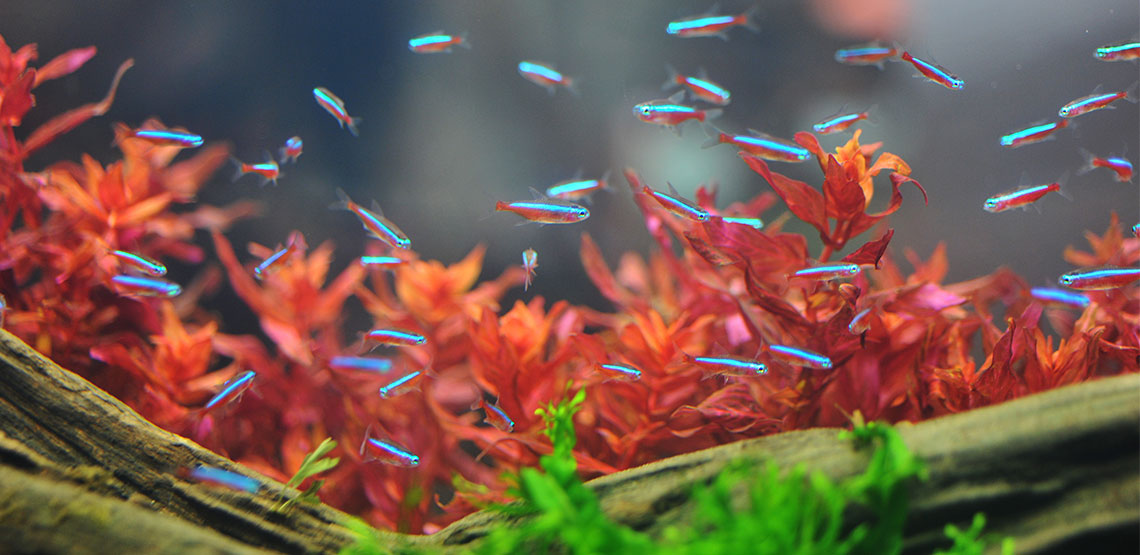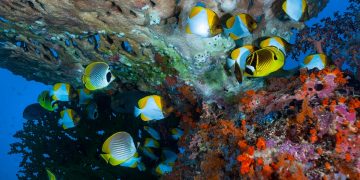A Complete Tetra Fish
While its bright and easily detectable scale coloration makes it easy prey in the wild, the unique appearance of the neon tetra fish has made it a favorite of aquatic pet enthusiasts the world over. Despite this, breeding neon tetras for the pet trade is virtually nonexistent in the United States, with most available fish being imported from breeding farms in the Far East. Some collectors prefer fish bred in the wild, which are available through Colombian, Peruvian and Brazilian channels.
Appearance
Size: Tetras grow to approximately 1¼ inches in length. Females have slightly larger stomachs than males.
Color: Neon tetras have fairly standard colorization, which includes a light metallic-blue back and a silver-white underbelly. Two iridescent stripes are seen on the body as well: one blue, one red.
Behavioral Characteristics
Because of its low position in the food chain, the tetra is a naturally shy fish that doesn't enjoy being with other fish species, particularly larger ones like catfish. However, if socialized slowly, they may be able to share a tank with placid, non-aggressive fish of similar size. Goldfish make good tank mates. They are social with other tetra fish and thrive when kept in large, uniform groups.
You May Also Like:
Related Search Topics (Ads):
Health and Care
Feeding: Neon tetra fish are omnivorous. They'll usually eat flake foods, but some prefer brine shrimp, frozen bloodworms or daphnia. Flaked foods delivered in sinking pellet form are excellent because they contain enhancements that boost the brilliant natural colors of neon tetras.
Tank Care: Neon tetras are easy to keep, but make sure to get an aquarium that's big enough to house a group of them. Choose a tank that's at least 24 inches in width. The tetra prefers slightly acidic water, so aim for a pH level between 5.0 and 7.0. Tanks with thick plates, kept under dim lights with a water temperature of 78 to 80 degrees Fahrenheit are ideal.
Health Concerns: Tetra fish react badly to sudden changes in their living environment. Water that's even a little too cold (or too hot) can have swift adverse effects on their health. They are also subject to a unique piscine condition known informally as neon tetra disease. This fish disease is caused by microbial parasites that cause neon tetra fish to lose their colors and develop cysts and curved spines. Fish showing any of these symptoms should be isolated from the others and, unfortunately, left to die – there is no cure for the condition.
Life Expectancy: An average survival time is two to three years; healthy tetras may live to be five years old.

